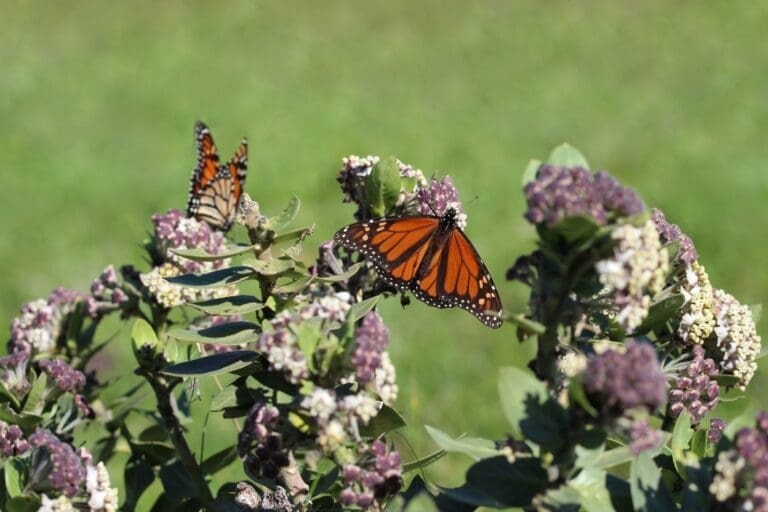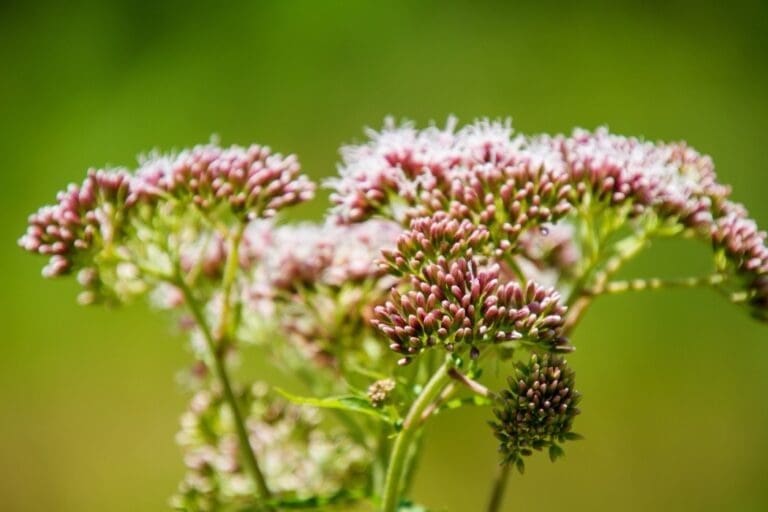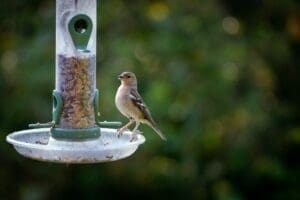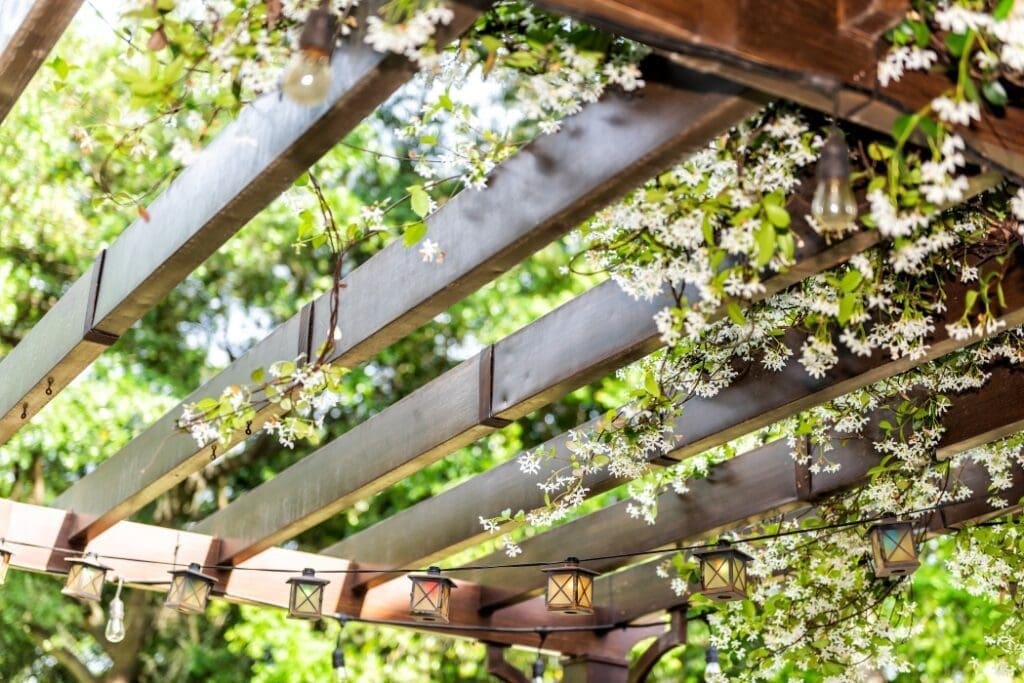While there are many plants that attract butterflies, one of the most important is milkweed. Providing milkweed in your garden can directly support butterfly populations, especially the iconic monarch butterfly.
In this guide, we’ll explore the importance of milkweed for butterflies and how UK gardeners can grow it to create a haven for these declining insects.
Warning
Milkweed contains toxins that can cause stomach upset if ingested, especially the roots. Wear gloves when handling and keep away from children and pets. Wash hands after contact. Seek medical help if ingested.
This post contains affiliate links which means we may make commission from any qualifying sales with no extra cost to yourself.
Understanding Milkweed

Milkweed refers to a group of flowering plants in the genus Asclepias. There are over 140 varieties of milkweed, with some growing over 5 feet tall. The common milkweed (Asclepias syriaca) is one of the best known. Milkweed is named for its milky sap, which contains toxic cardiac glycosides. This makes the plant distasteful to predators.
For butterflies, milkweed is a vital food source. The toxins the plants produce are absorbed by caterpillars that feed on the leaves. This makes the caterpillars and adult butterflies that develop from them poisonous as well, protecting them from predators. Milkweed is especially important for monarch butterflies.
The Connection between Milkweed and Monarchs


Monarch butterflies (Danaus plexippus) have an incredible migration story. Each fall, millions of monarchs travel up to 3000 miles from the United States and Canada to overwintering sites in central Mexico. In spring, their great-grandchildren make the return trip north.
This migration is only possible because of milkweed. Monarch caterpillars feed exclusively on milkweed plants. They ingest the toxins from the milkweed sap, which makes the adult butterflies foul-tasting to potential predators.
Sadly, monarch numbers have declined dramatically in recent decades. Habitat loss and the destruction of milkweed plants are major factors. Providing milkweed habitat in the UK can help preserve this iconic species.
Top Tip
Choose milkweed varieties suited to your growing conditions and avoid pesticides to create a safe haven that sustains butterflies.
Other Butterflies that Benefit from Milkweed
In addition to the monarch, other UK butterfly species rely on milkweed at various life stages:
- Small tortoiseshell
- Peacock butterfly
- Comma
- Painted lady
- Red admiral
Milkweed provides food and shelter for caterpillars, nectar for adults, and serves as a breeding ground for many butterflies. Planting milkweed attracts and supports multiple butterfly species.
Choosing the Right Milkweed for the UK Climate


Several milkweed varieties can thrive in UK growing zones. Here are some top options:
- Common milkweed – Hardy, easy to grow, and supports monarch caterpillars.
- Swamp milkweed – Does well in damp conditions.
- Tropical milkweed – Can be grown as an annual but should be cut back to avoid parasite spread.
- Butterfly weed – Low-growing with bright orange flowers.
- Purple milkweed – Visually striking with magenta blooms.
When choosing milkweed, opt for non-invasive varieties that suit your growing conditions. Check with local garden centres or nurseries for availability.
How to Plant and Care for Milkweed
Milkweed thrives in a sunny spot with well-draining soil. It can tolerate poor, dry conditions. Here are some tips for getting it established:
Planting: Sow seeds or plant young starts in spring after the last frost. Space plants 1-2 feet apart.
Water: Water regularly until established, then milkweed tolerates drier conditions.
Maintenance: Remove spent flower heads and cut plants back in fall. Monitor for aphids.
Overwintering: Cut down dead stems in winter to allow new growth in spring. Mulch for protection.
Propagation: Milkweed spreads readily by seed pods and underground rhizomes.
Follow these simple care guidelines and your milkweed will flourish, providing necessary food and habitat for monarch caterpillars and other butterfly species.
The Importance of Avoiding Pesticides


When cultivating milkweed for butterflies, it’s critical to avoid chemical pesticides. Many common insecticides are directly toxic to caterpillars and butterflies.
Opt for organic approaches instead:
- Handpick large pests.
- Use row covers to keep away small insects.
- Apply natural repellents like neem oil if needed.
- Tolerate some leaf damage as food for caterpillars.
Avoiding pesticides is one of the most significant steps you can take to create a safe butterfly habitat.
Enhancing Your Butterfly Garden


While milkweed meets many essential needs of butterflies, providing diverse flowering plants, water sources, and shelter can further entice them to visit and flourish. Consider adding:
- Nectar plants like lavender, verbena, and coneflowers.
- Fruit trees, bushes, and berry brambles.
- A shallow dish with wet sand or rocks for butterflies to sip water.
- Brush piles, log posts, and leaf litter for shelter.
- Plants with different heights, shapes, and colors to attract a variety of butterflies.
Creating an inviting habitat encourages butterflies like monarchs to breed and produce new generations.
Challenges and Concerns with Tropical Milkweed
There has been some controversy over tropical milkweed (Asclepias curassavica) in recent years. While non-native, this variety blooms for longer and is easier to grow in UK gardens. However, tropical milkweed does not die back in winter like native species. This allows parasite and disease buildup that can sicken butterflies.
If planting tropical milkweed, gardeners should:
- Cut it back each fall and discard stems and leaves.
- Monitor plants for signs of disease or parasites.
- Limit tropical milkweed and focus more on native varieties.
With proper care, tropical milkweed can provide food for caterpillars, but native species are ideal when possible.
Final thoughts
Creating a butterfly-friendly garden with milkweed and other plants provides vital habitat for declining butterfly populations. The joys of seeing monarchs, tortoiseshells, painted ladies and other species visit your outdoor space are immeasurable.
As gardeners, we have a unique opportunity to make a difference for butterflies one garden at a time. Join the effort to provide food and shelter for the next generation. Share photos of caterpillars and butterflies thriving in your own milkweed patch to inspire others.
With simple actions like planting native milkweed, we can preserve butterflies for future generations to admire. Our gardens can create corridors of habitat and provide stops along the monarch’s astounding migration. Imagine being a part of that incredible journey! By cultivating milkweed, you open your garden’s gates to wonders like the monarch migration and the delight of welcoming these iconic insects.
Call to Action: Grow Milkweed and Join the Movement!
We’d love to see photos of your own milkweed plants and the butterflies they attract. Share with us here to inspire other wildlife gardeners!
You can also get involved with local conservation groups like Butterfly Conservation to further support butterfly populations through habitat creation and advocacy. Together, gardens big and small create meaningful change.
Will you add milkweed to your garden this year and contribute to a brighter future for butterflies? We can’t wait to see your butterfly-friendly gardens thriving with life.
Frequently Asked Questions
Q. How long does it take for milkweed to grow?
Milkweed growth varies by variety, but plants typically reach 1-3 feet in height within one growing season. With the right care, milkweed produces blooms by mid to late summer. it’s a hardy perennial that comes back bigger each year.
Q. Does milkweed spread easily?
Some milkweed species spread readily by underground rhizomes and self-sowing seeds. Common and swamp milkweed in particular can take over garden areas. Plant in containers or areas where you don’t mind it spreading to keep growth contained.
Q. Is it safe to have milkweed around children?
Milkweed does produce toxins, so ingesting parts of the plant can cause issues. However, touching or playing near milkweed is safe. Supervise young children and teach them not to put plant parts in their mouths. Avoid growing milkweed in areas frequented by infants.
Q. How do I harvest milkweed seeds?
In late summer, milkweed seed pods burst open when ripe. Collect pods when dry, break them open, and separate the silky seeds. Store seeds in an airtight container in a cool place until ready to plant. Be sure to leave some pods intact for self-sowing.






